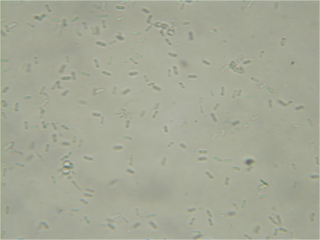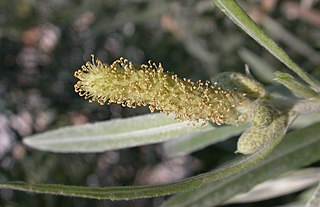Related Research Articles

The beet armyworm or small mottled willow moth is one of the best-known agricultural pest insects. It is also known as the asparagus fern caterpillar. It is native to Asia, but has been introduced worldwide and is now found almost anywhere its many host crops are grown. The voracious larvae are the main culprits. In the British Isles, where it is an introduced species and not known to breed, the adult moth is known as the small mottled willow moth.

Cymothoa exigua, or the tongue-eating louse, is a parasitic isopod of the family Cymothoidae. It enters fish through the gills and the female attaches to the tongue, with the male attaching to the gill arches beneath and behind the female. Females are 8–29 mm (0.3–1.1 in) long and 4–14 mm (0.16–0.55 in) wide. Males are about 7.5–15 mm (0.3–0.6 in) long and 3–7 mm (0.12–0.28 in) wide. The parasite severs the blood vessels in the fish's tongue, causing the tongue to fall off. It then attaches itself to the remaining stub of the tongue and becomes the fish's new tongue.

Phoma exigua is a fungal plant pathogen. It causes wet weather blight in cotton and it can be treated with systemic copper.
Carnarvoncochlea exigua is a species of very small freshwater snails which have an operculum, aquatic gastropod mollusks in the family Tateidae.
Partula exigua, common name the Moorean viviparous tree snail, was a species of air-breathing tropical land snail, a terrestrial pulmonate gastropod mollusk in the family Partulidae. This species was endemic to the island of Moorea in French Polynesia. It is now extinct.

Salix exigua is a species of willow native to most of North America except for the southeast and far north, occurring from Alaska east to New Brunswick, and south to northern Mexico. It is considered a threatened species in Massachusetts while in Connecticut, Maryland, and New Hampshire it is considered endangered.

Phoma is a genus of common coelomycetous soil fungi. It contains many plant pathogenic species.

Claytonia exigua is a species of wildflower known by the common names serpentine springbeauty and pale claytonia, in the family Montiaceae.
Orthomecyna is a genus of moths of the family Crambidae. All species are endemic to Hawaii.

Iflaviridae is a family of positive sense RNA viruses insect-infecting viruses. Some of the insects commonly infected by iflaviruses include aphids, leafhoppers, flies, bees, ants, silkworms and wasps. The name "Ifla" is derived from the name "Infectious flacherie virus", a member species. There is one genus (Iflavirus) and 15 species in this family.

Madia exigua is a species of flowering plant in the aster family known by the common names small tarweed and threadstem madia.

Stephanomeria exigua, the small wirelettuce, is a perennial or biennial plant native to the western United States. It is thought to be the parent species of Stephanomeria malheurensis, an endangered plant species found only in southern Oregon. It generally blooms from mid-spring to late summer and produces small, light pink or light purple blooms.
Ponometia exigua is a moth of the family Noctuidae first described by Johan Christian Fabricius in 1793. It is found from Georgia, south to Florida and west to Texas. Outside of the United States it is found in Jamaica, Cuba, Hispaniola, the Virgin Islands and Central America and South America down to Brazil.
Orthomecyna exigua is a moth of the family Crambidae. It is endemic to the Hawaiian islands of Molokai, Maui, Lanai and Hawaii.

In the shell of gastropod mollusks, the lip is the free margin of the peristome or aperture of the gastropod shell.
Geodia exigua is a species of sponge that produces the sesquiterpene spiro compound exiguamide. The species was first described by Johannes Thiele in 1898. It is a marine organism known from Japan.

Epipyrops exigua or Fulgoraecia exigua, the planthopper parasite moth, is a moth in the Epipyropidae family. It was described by Henry Edwards in 1882. It is found in North America, where it has been recorded from New Jersey and Pennsylvania to central Florida, west to Missouri, Texas, New Mexico, Arizona and California.
Eucalyptus exigua is a species of mallee that is endemic to Western Australia. It has smooth, whitish bark, linear to narrow lance-shaped adult leaves, flower buds in groups of between seven and eleven, white flowers and short barrel-shaped to conical fruit.
Stenauxa fasciata is a species of beetle in the family Cerambycidae. It was described by Stephan von Breuning and Pierre Téocchi in 1983.

Pelegrina exigua is a species of jumping spider in the family Salticidae. It is found in the United States.
References
- ↑ BioLib.cz - Stenauxa exigua. Retrieved on 8 September 2014.